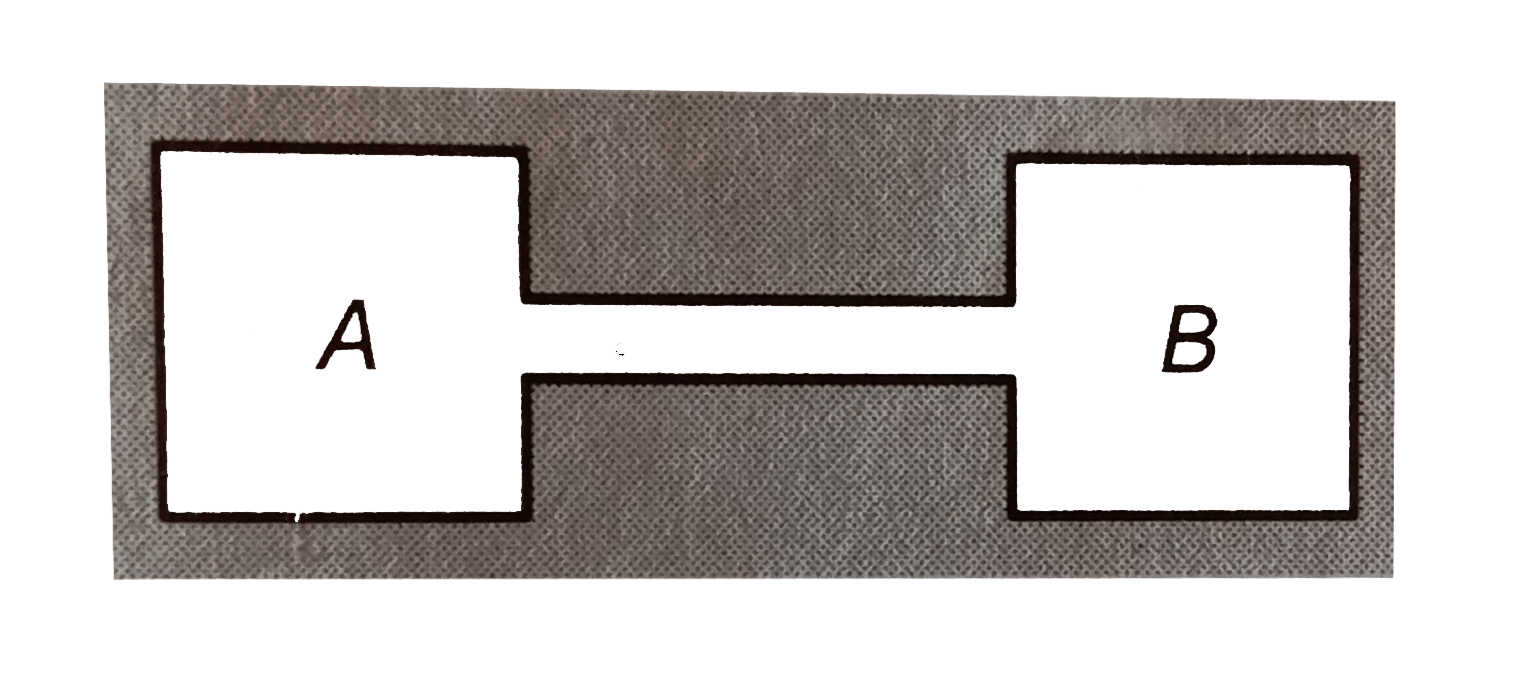The value of Cp−Cv is 1.09R for a gas sample in state A and is 1.00R in state B. Let TA,TB denote the temperature and pA and pB denote the pressure of the states A and B respectively. Then Solution in Tamil
a) pA<pB and TA>TB
b) pA>pBandTA<TB
c) pA=pBandTA<TB
d) pA>pBandTA=TB
The correct Answer is:A
Step by step video & image solution for The value of C_(p) - C_(v) is 1.09R for a gas sample in state A and is 1.00R in state B. Let T_(A),T_(B) denote the temperature and p_(A) and p_(B) denote the pressure of the states A and B respectively. Then by Physics experts to help you in doubts & scoring excellent marks in Class 11 exams.
Updated on:21/07/2023Topper's Solved these Questions
Similar Questions
A wave of wavelength 0.60 cm is produced in air and it travels at a speed of 300 ms^-1. Will it be audible?
View SolutionThe gravitational force acting on a particle of 1 g due to a similar particle is equal to 6.67×10−17N. Calculate the separation between the particles.
View SolutionThe value of (Cp−Cv) is 1.00R for a gas sample in state A and is 1.08 R in state B. Let (pA,pB)denote the pressures and (TAandTB) denote the temperatures of the states A and B respectively . Most likely
View SolutionThe value of CP−Cv=1.00R for a gas in state A and CP−Cv=1.06R in another state. If PA and PB denote the pressure and TA and TB denote the temperature in the two states, then
View SolutionTwo different ideal diatomic gases A and B are initially in the same state. A and B are then expanded to same final volume through adiabatic and isothermal process respectively. If P_(A), P_(B) and T_(A), T_(B) represents the final pressure and temperature of A and B respectively then.
View Solutionshows two vessels A and B with rigid walls containing ideal gas. The pressure volume and temperature in vessel A are PA,V and TA whereas in vessel B,PBV and TB The vessel are now connected through small tube of negligible volume Show that the final pressure P and temperature T satisfy the equation
PT=12[PATA+PBTB]
 .
.
View SolutionOne mole of a gas is in state A[P, V, T_(A)] . A small adiabatic process causes the state of the gas to change to B [P + dP, V + dV, T_(B)] . The changes dV & dP are infinitesimally small and dV is negative. An alternative process takes the gas from state A to B via A rarr C rarr B . A rarr C is isochoric and C rarr B is isobaric path. State at C is [P + dP, V, T_(C)] . (a) Rank the temperatures T_(A), T_(B) and T_(C) from highest to lowest. (b) Find g of the gas in terms of T_(A) , T_(B) and T_(C) .
View SolutionA gas with (c_(p))/(c_(V))=gamma goes from an intial state (p_(1), V_(1), T_(1)) to a final state (p_(2), V_(2), T_(2)) through an adiabatic process. The work done by the gas is
View SolutionOn mole of a monoatomic ideal gas is taken through the cycle shown in figure .
A→B : Adiabatic expansion B→C : Cooling at constant volume
C→D: Adiabatic compression D→A : Heating at constant volume
The pressure and temperature at A,B, etc, are denoted by PA,TA,PB,TB etc., respectively . Given that TA=1000K,PB=(23)PAandPC=(13)PA. Calculate the following quantities: (i) The work done by the gas in the processs A→B (ii) The heat lost by the gas in the process B→C (iii) The temperature TD.(Given:(23)2/5=0.85)
_E01_271_Q01.png)
View SolutionOne mole of a monatomic ideal gas is taken through the cycle shown in figure
 The pressures and temperatures at A,B etc, are denoted by PA,TA,PB,TBetc respectively.Given TA=1000K,PB=(2/3)PAandPC=(1/3)PA Then choose the incorrect option.
The pressures and temperatures at A,B etc, are denoted by PA,TA,PB,TBetc respectively.Given TA=1000K,PB=(2/3)PAandPC=(1/3)PA Then choose the incorrect option.
View Solutionunderset(P_(1), V_(1), T_(1))("State") A overset("Rev")rarr underset(P_(2), V_(2), T_(2))("State B") : If P_(1) = P_(2) then
View SolutionOne mole of a monatomic ideal gas is taken through the cycle shown in figure
 The pressures and temperatures at A,B etc, are denoted by PA,TA,PB,TBetc respectively.Given TA=1000K,PB=(2/3)PAandPC=(1/3)PA Then choose the incorrect option.
The pressures and temperatures at A,B etc, are denoted by PA,TA,PB,TBetc respectively.Given TA=1000K,PB=(2/3)PAandPC=(1/3)PA Then choose the incorrect option.
View SolutionA gas with CP/CV= goes from an initial state (P1,V1,T1) to a final state (P2,V2,T2) through an adiabatic process. The work done by the gas is
a)nR(T1−T2)γ−1
b)P1V1−P2V2γ−1
c) nRγ(T1−T2)
View SolutionA gas with C_(P)//C_(V)=gamma goes from an initial state (P_(1), V_(1), T_(1)) to a final state (P_(2), V_(2), T_(2)) through an adiabatic process. The work done by the gas is a) (nR(T_(1)-T_(2)))/(gamma-1) b) (P_(1)V_(1)-P_(2)v_(2))/(gamma-1) c) nR gamma(T_(1)-T_(2))
View SolutionThe value of CP−Cv=1.00R for a gas in state A and CP−Cv=1.06R in another state. If PA and PB denote the pressure and TA and TB denote the temperature in the two states, then
View SolutionTwo different ideal diatomic gases A and B are initially in the same state. A and B are then expanded to same final volume through adiabatic and isothermal process respectively. If PA,PB and TA,TB represents the final pressure and temperature of A and B respectively then.
View Solution
